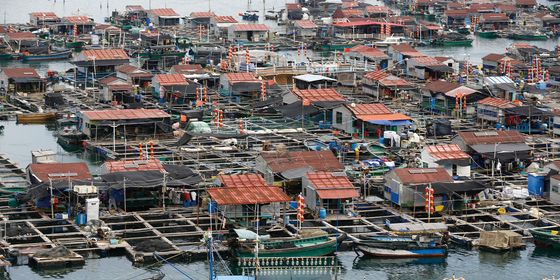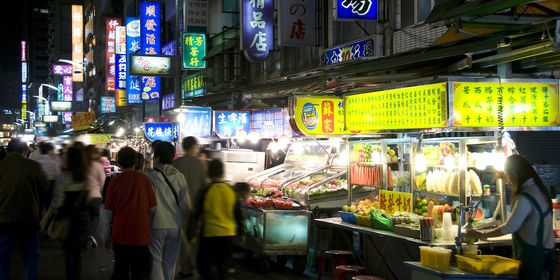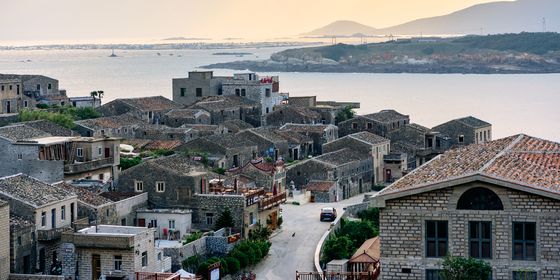Shandong’s capital Jinan is a watery city of romance
Surrounded by mountains and hills and fostered by the Yellow River, Shandong’s provincial capital Jinan is a city of watery charms and romance.
Unique in its geography, the city is known as the “City of Springs,” sitting in a transitional zone between the northern foothills of the Taishan Mountain Massif to the south of the city and the valley of the Yellow River to the north. On one side of the city, karst aquifers create caves and underground streams. On the other side are magmatic rocks which block underground flows, forcing water to gather in subterranean aquifers. The retained water wells up through fissures within the rocks and soil, resulting in the numerous artesian springs across the city. The majority of the springs are concentrated in the downtown district and flow north into Daming Lake (大明湖).
In the 12th century, the “72 famous springs” were mentioned in historical texts, suggesting they were always an attraction for the city. The Baotu Spring (趵突泉) is probably the most well-known, though it is only one of a group of more than 20 springs in downtown Jinan. Baotu Spring sustains a 20-by 30-meter pond, 1.5-meter-deep around its three outlets. In its heyday, the spring would spurt violently a meter into the air.
However, the spring’s flow has grown much weaker in recent years and has even experienced seasonal stoppages, due to climate change and the increased underground water demands of the city. With growing environmental awareness, measures have been taken to protect the springs.
Countless poems have been written to praise the beauty of the springs. The park around Baotu was built in the 1950s and incorporates adjacent smaller springs, such as the Golden Thread Spring (金线泉) and the Jade-Washing Spring (漱玉泉), as well as a number of ancient shrines, pavilions, memorial halls, bridges, and steles full of aesthetic and historical value. The spring water in the park has a relatively stable temperature of 18 degrees Celsius, and in winter, steam forms over the waters, giving the park a hazy charm.
The spring water is clean enough to drink and of very high quality. Emperor Qianlong of the Qing dynasty (1616 – 1911) always insisted on water collected from the Jade Spring Hill in Beijing on his tour in the south, but when he had a sip from the Baotu Spring in Jinan, he changed his mind and called it “the best spring under heaven.” After that, he was converted, and his water supply had to come from Baotu Spring.
Daming Lake has become a popular watery attraction, thanks to the famous romance novelist Chiung Yao. Ask any Chinese millennial if they have heard of the lake, and the response will probably be a resounding yes; they may even recite a line from Chiung Yao’s popular novel and its TV adaption, Princess Pearl: “Do you still remember Xia Yuhe by Daming Lake?”
Located to the northeast of the city center and formed by artesian springs, the Daming Lake Park covers an area of a little over half a square kilometer. The lake is dotted with islands and framed with thick willows. Visitors can enjoy crossing stone-carved bridges, stopping by pavilions, and watching fish swimming among the lotus flowers. The Travels of Lao Can (《老残游记》), a novel by Liu E (刘鹗) published in 1907, famously depicted the charms of Jinan. “Lotus on four sides and willows on three; half of the mountain scenery is reflected in the lake.”
Around Daming Lake, the Xiayuan Garden (暇园) was built in 1909 as part of the Shandong Library. It boasts streams flowing under curved bridges, pavilions standing on hills, and winding paths leading to secluded woods. One can take a boat to the biggest island on the lake, where the Lixia Pavilion (历下亭) stands. The northern bank features the Beiji Pavilion (北极阁), a Daoist temple, on the terrace of which visitors can enjoy a panoramic view.
In 1748, on his way back to Beijing during his first eastern tour, Qianlong’s beloved wife, who accompanied him on the journey, unexpectedly passed away in Jinan at the age of 36. The empress is described as a respected and virtuous woman who was mourned by Qianlong for the rest of his life. From then on, Jinan became a forbidden city to the emperor and he never set foot in it again.
Jinan is a convenient city to visit, as many of the major sites are in close proximity, found within a scenic area which includes the parks, springs, the lake, and a city moat that connects them all. Within this zone, travelers can visit Qushuiting Street (曲水亭街) built along a small river, featuring traditional residences. You can relax at the coffee shops and bars south of Daming Lake, or hit Furong Street (芙蓉街)—the famous snack street—for some local delicacies.
The scenic area is not just a tourist attraction; it is the oldest part of Jinan, and preserves the traditional way of living by the water. Locals from other parts of the city enjoy relaxing and exercising here. One of the most interesting activities is the regular matchmaking assembly held by locals and even the government to encourage young people to get together—a touch of romance to the City of Springs.
Cover image: Daming Lake in Jinan (from VCG)
Excerpt taken from Rivers Deep, Mountain High, TWOC’s guide to Shandong. Find it in our online store, or get a free copyon WeChat!













